The Modlin Beat
Audio & Music
Vintage
The Modlin Beat
Audio & Music
Vintage
The Roland TR-909 Rhythm Composer drum machine is legendary. Despite an ever growing set of clones and digital recreations, the original Roland TR-909, produced from 1984 to 1985, continues to be a sought after machine and remains in use by many of today’s musicians.
For the lucky current and future owners of a vintage 909, these upgrade kits will improve its usability and longevity, further increasing the power of this already highly sought after piece of music history.
Since it predates the availability of high capacity non-volatile memory, the 909’s battery-based back-up of RAM for pattern storage is a point of consistent problems and frustrations. Without the addition of a rare and costly external memory cartridge, the stock 909 does not have enough storage for patterns, requiring users to create pen and paper backups and regularly re-enter patterns. Due to the battery backup system, it is very common for a user to lose their entire memory when the battery dies or from environmental changes that disconnect the battery or drop its voltage. Cleaning out and repairing 909s from a corroded battery is standard practice for repair shops.
Additional problems 909s often exhibit include: the firmware ROM chip failing, the MIDI port being unable to drive two long cables, and LED segments of the display or individual LEDs no longer illuminating. The firmware chip failure renders the 909 useless until a replacement is purchased and installed. There are workarounds to drive multiple MIDI devices from the 909, however, they may require additional hardware or cabling and do not utilize the fact that the 909 has dual MIDI output ports. And who would want to use their 909 without all the LEDs lighting up?
Current solutions to the TR-909 problems are limited. Users can send their 909 to a professional repair shop or modder to have it upgraded or repaired. They can also attempt to perform the mods themselves by studying the schematics and online research.
This product provides a better solution, with a series of DIY installable modules that upgrade and enhance the 909’s use, and fix some known issues with the original system. These modules upgrade the RAM, ROM, MIDI, and LED systems and increase the usability, longevity, and aesthetics of the vintage 909.
To install these mods, users do not need any electronics design knowledge and they do not need to acquire any parts. They also do not need to make irreversible changes to their 909, such as cutting PCB traces or soldering wires to tiny pins. They just need to desolder and remove the old part, and solder the new module in its place. All adaptation from the old part to the new module is handled by the module itself.
This product enables up to five modifications to the Roland TR-909 drum machine. Each modification is designed to be as easy to install as possible.
This project is a collection of five individual modifications. It is not necessary to purchase and install all five, however, you would only need to open up the 909 once to install them all. The details of each of the five modification kits are as follows.
This modification kit replaces the existing battery backed-up RAM system used for storing user’s patterns and tracks with a modern, non-volatile storage system. Additionally, the new system has 4x the capacity of the original system with the ability to seamlessly switch between four banks of storage on-the-fly.
This modification has been a very desirable upgrade to the 909, however, up until now it was performed by replacing the original 28-pin DIP chip with another 28-pin DIP chip and adapting the board to use the new chip by cutting traces and running wires.
This RAM mod is a custom PCB that contains a surface-mount package memory chip and the logic chips that adapt the 909’s cpu communication interface to the new chip. The result is that nothing has to be done to the original 909 circuitry. The PCB is designed in the same form factor as a 28-pin DIP, so the installation process is to desolder the original 28-pin DIP chip and solder in its place the RAM mod module. There is one additional signal that needs to be connected to the module, which is done by non-destructively attaching (soldering is recommended but it can also be mechanically attached) a pre-cut and stripped flying wire to an easy attachment point.
The module’s PCB is .031” thick, all of the components are thin surface mount packages, and the pins used are low-profile pins, resulting in the thickness of the module being thinner than the original DIP package chip. This allows the use of a socket without the module hitting the case. While it is not recommended to use a socket unless you have a need to pop in and out memory chips, (cut a hole in the case and have a cartridge system with multiple RAM mods?) some users, particularly first-time-modders, may feel more comfortable soldering in a DIP28 socket instead of jumping right in and soldering a costly module.
On the module is a 3-pin connector to wire an external 4-way bank selection switch. This connector mates with the included 3-pin wire. With the wire mated to the module, the height of the module is not increased, it remains the same height above the board and can still use a socket if desired. This wire can be fed out the side or bottom of the 909 and connect to an external switch without drilling any holes in the case. Optionally, it can be fed anywhere inside the case, if you would rather drill a hole and mount the switch on the case.
Included in the kit is a 4-way rotary switch pre-wired with a pigtail connector that mates with the included 3-pin wire. This can be mounted through a hole drilled in the case, stuck to the case with the wire ran through the side or bottom, put into a side box, or even left hanging loose. If preferred, the pigtail connector can be desoldered from the switch and attached to a different switch, such as dual toggles.
Over the course of its production, several different versions of the 909 were released. The difference between versions are mainly component values that change the behavior of the synth, such as increasing the range of values for some parameters, or component upgrades that address common failures. Which is the best version has long been a topic of debate, and many user-mods have been about changing the component values between the different released versions of the 909 as detailed in the 909 Service Manual.
In addition to the component changes, the different released versions have different OS versions. From the factory, depending on when it was released and which components were used, the OS could have been V1, V2, or V3. It is a long-standing belief that these three versions are identical with the exception of the version ID number being 1, 2, or 3 to identify which 909 release a particular machine is. The Service Manual further confuses the issue by talking about a Revision 0 and a Revision 1 of the ROM part itself and a Ver. 1 and Ver. 2 of the OS, and lists differences between the two. Eight months after the Service Manual was printed, Roland released a Ver. 4 upgrade ROM that fixes some rare, but common enough for them to release an upgrade, timing issues. The Ver. 4 ROM works in all versions of the 909 hardware.
This module replaces the original PROM that contains the operating system of the 909. In addition to using a more robust, modern memory chip and the module being thinner than the original DIP28 chip, this module contains all four versions of the 909’s OS, selectable with an onboard DIP switch.
The OS Rom mod is being offered at a similar price point as buying a V4 OS ROM. For the same price and soldering effort as purchasing and installing a V4 OS ROM, you can install this module which allows reverting back to the original OS of your unit at the flick of a switch.
In addition to this module allowing a non-destructive upgrade path to V4 and an archive of all of the firmware versions, it allows experimentally discovering the differences, if any, of the various firmware versions as well as allows the version ID to match the hardware version if the 909 has been modified from its original released version to a later version after-the-fact.
At the start of this campaign, we do not currently have a clean copy of the V2 and V3 firmware. We hope to acquire these images and include them in the OS ROM mod by the completion of the campaign. See below for details, and to potentially get free upgrades.
At the time of its release, one of the most exciting features of the 909 was its inclusion of MIDI. The MIDI input allowed it to be synchronized to an incoming MIDI clock and allowed enough external control to integrate the 909 into a studio setup. The MIDI output allows the 909 to be the master clock to sync other devices to it and can output MIDI note messages from the 909’s sequencer to trigger external instruments.
An issue with the design of the 909 is that there is a single MIDI output driver circuit located on the main digital board. The MIDI signal runs from this circuit to the MIDI port board where it is split between two MIDI out ports. By only having a single driver circuit for two ports, hooking up two external MIDI instruments can cause problems associated with the additional load on the single driver.
This is fixed by adding a second driver circuit. Over the years, techs have performed several different modifications for adding this second driver circuit to the MIDI output. They all involve modifying the main circuit board so that the driver circuit is bypassed and the TTL logic level signal from the CPU is sent to a dual driver circuit connected to the two MIDI out ports.
The MIDI Driver mod is a new method for this fix that does not require touching the main digital circuit board at all. It is a very thin circuit board that mounts flat on the MIDI port board and can be installed without removing any other boards.
The three-digit, seven-segment LED display on the 909 displays the tempo and other parameters. The specific display component used in the original 909 is a module consisting of a three-digit display component on a PCB providing the multiplexed segment signals and the common cathode for each digit. It is no longer manufactured. The LED Display mod is a custom replacement part for this display consisting of a PCB and surface mount LED digits.
This part is useful for replacing a defective LED Display on the 909, and since it comes in 5 colors it is also an optional cosmetic change to differentiate your 909 and/or indicate that it has one or more of the other upgrade mods.
In honor of the late Ikutaro Kakehashi, a.k.a. Mr. K, the founder of Roland, the Mr. K Tribute LED mod contains a set of “Roland orange” colored LEDs for all of the LEDs on the 909. The set contains 14 1.8mm LEDs that go inside the toggle switches, 17 rectangular LEDs that go inside the main pushbuttons, four flat top LEDs for the scale selection, and one orange LED Display mod. Since it can be challenging to install the LEDs inside the switches, a few extra LEDs will be included.
The product is fully designed and tested, so it is just a matter of assembling the quantity ordered and then creating the step-by-step installation guide.
There is only one part that does not have multiple options and suppliers. This part is on the RAM module. If that one part is not in stock, it may cause a production delay depending on the quantity needed.
Although these kits have been designed to be as easily installed as possible, there is some inherent risk involved in opening up and modifying electronic devices. We will provide detailed instructions and be available as best as we can to help the backers of this campaign install their kits. By purchasing, you acknowledge that your actions around what you do with these kits are your own responsibility and your own risk. Please make sure you disconnect the power before you put a tool anywhere near your machine, take your time, and double-check your installation before you re-assemble and/or apply power. That said, so far we have not seen any problems in any of our test installs so it pains us a little bit to have to add this disclaimer.
At the start of this campaign, we do not currently have a clean copy of the V2 and V3 firmware. We hope to acquire these images and include them in the OS ROM mod by the completion of the campaign. See below for details.
Once the first production run has been manufactured, all 909 Mods will be sent to Crowd Supply’s warehouse in Portland, Oregon. From there, they will be shipped to backers around the world. You can read more about shipping policies and procedures here.
Provide us with a V2 or V3 OS image and we will send you a free RAM mod kit and a free OS ROM mod.
If you have upgraded your OS to V4 and removed a V2 or V3, then all you have to do is send us the removed ROM chip. We will rip the code and send it back to you with the two free mods.
If you would like to upgrade to our OS ROM mod and you have a V2 or V3 909, then you can open up the 909, desolder the ROM (we can guide you), and send it to us. We will send it back with your two free mods, and you can install the mods while you have the 909 opened.
If you have a V2 or V3 909, and can part with it for a week, you can send in the whole 909, we will rip the OS from it and send it back to you with the two free mods installed, tested, and reassembled.
If you are interested, you can check your firmware version by holding the Track 1 Play/Write button down while powering up the machine. One of the first four main instrument buttons will light up indicating the version number. If button 2 or button 3 light up, and you are interested in helping us out, take a photo of the version indication and get in touch.
Once the first production run has been manufactured, all 909 mods will be sent to Crowd Supply’s warehouse in Portland, Oregon. From there, they will be shipped to backers around the world. You can read more about shipping policies and procedures here.
The Modlin Beat creates DIY installable modules to enhance vintage synthesizers and drum machines. For the most part, The Modlin Beat’s work is to support the music making of its members and friends. The 909 upgrade mods are the first of these modules made available thanks to the encouragement of Crowd Supply’s Dr. Josh Lifton. But will they be the last?
Produced by The Modlin Beat in Los Angeles, CA.
Sold and shipped by Crowd Supply.
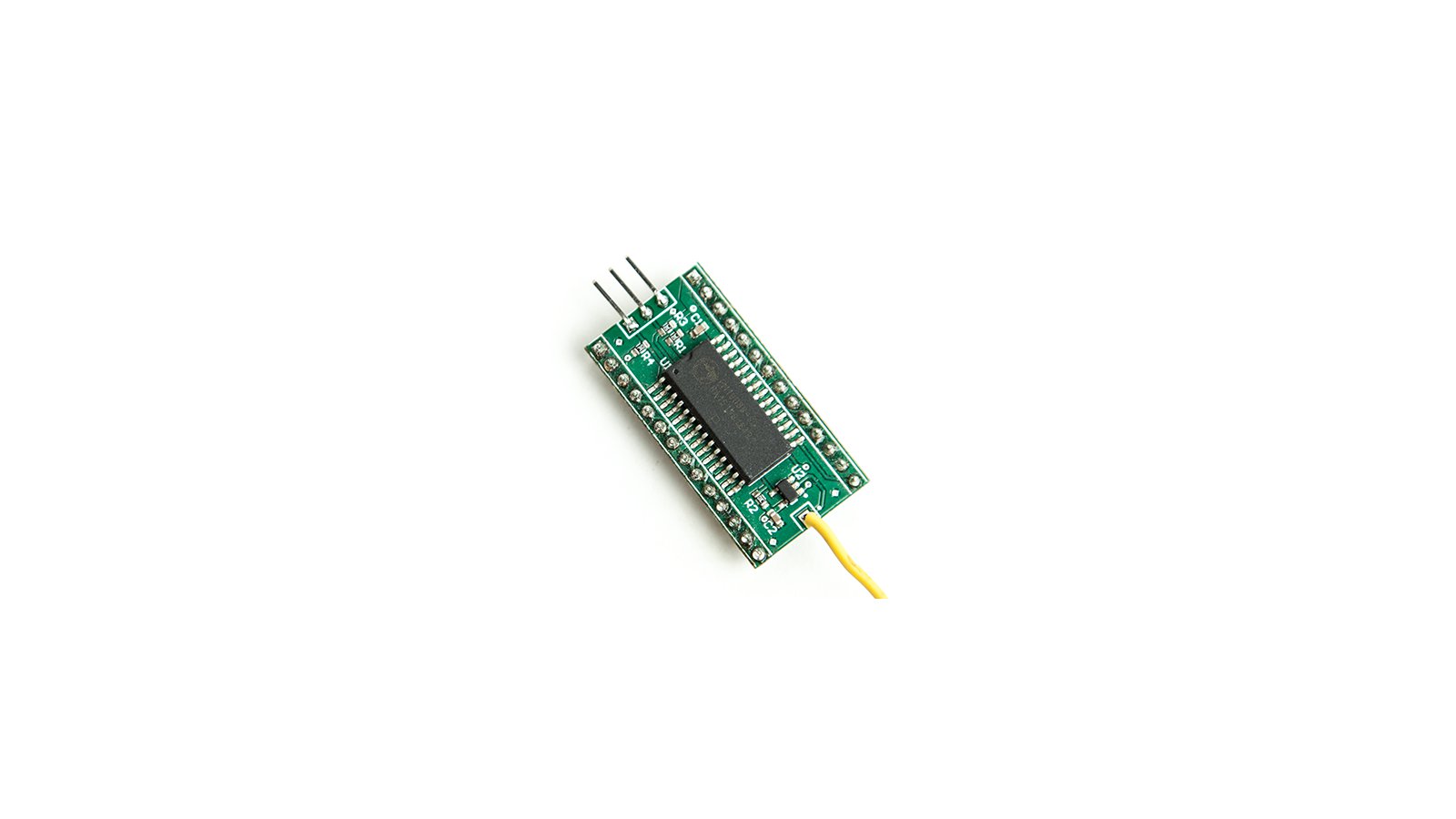
This mod replaces the original battery-backed RAM for user storage with a modern, non-volatile RAM system. The module contains a memory chip with 4x the capacity of the original RAM chip and the module has all of the glue logic that adapts the 909s RAM interface to the modern chip. Includes RAM chip, 3-pin cable with dual connectors, 4-way rotary switch w/ diodes and connector, and installation instructions.
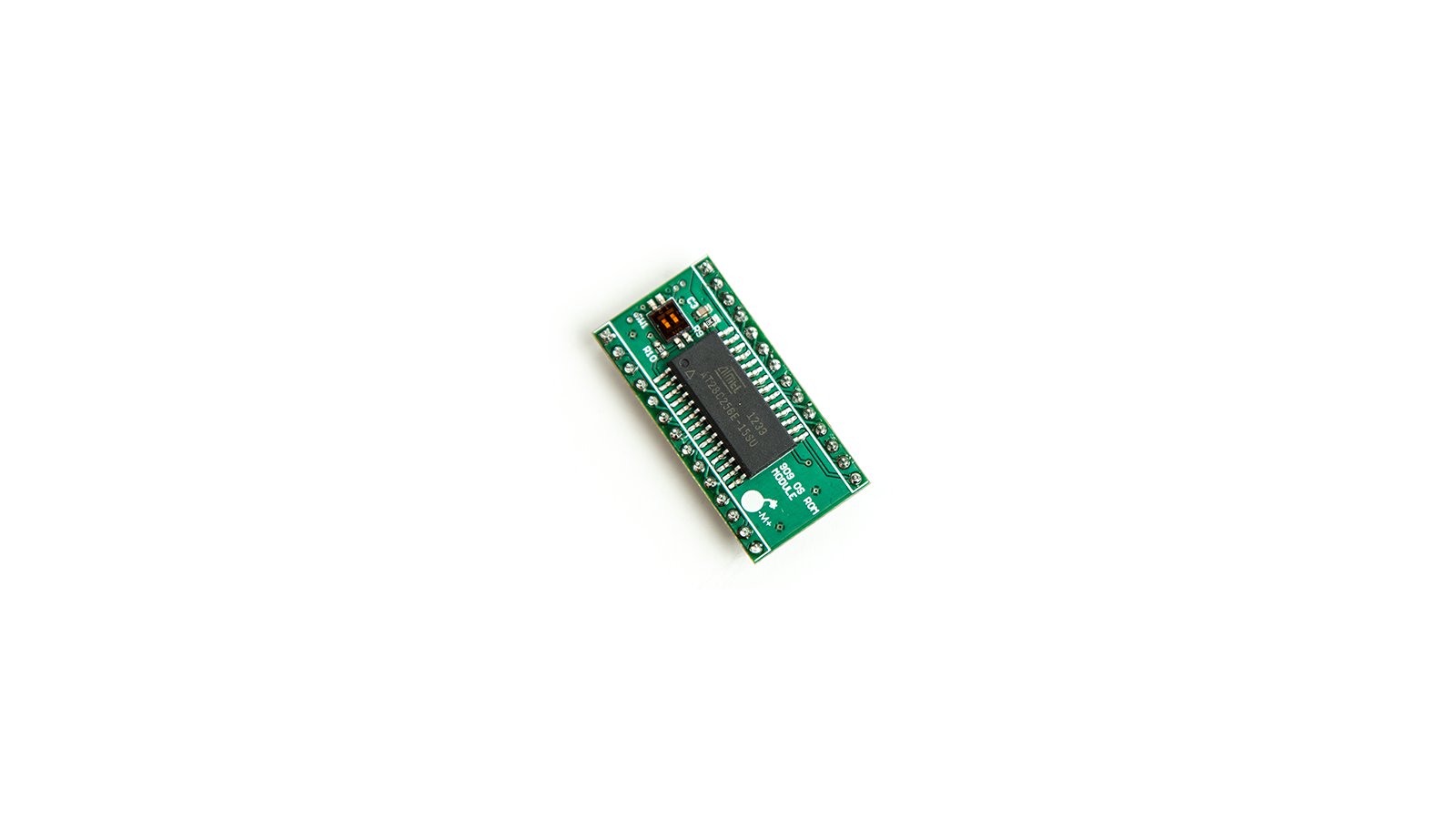
This mod replaces the EPROM that contains the OS with a modern, more robust memory chip. This chip has 4x the capacity of the original EPROM and can hold four different versions of the OS, selectable with a miniature DIP switch. Comes pre-loaded with all four versions of the original OS - we don't currently have V2 and V3, but expect to by the time this mod ships. Installation instructions included.
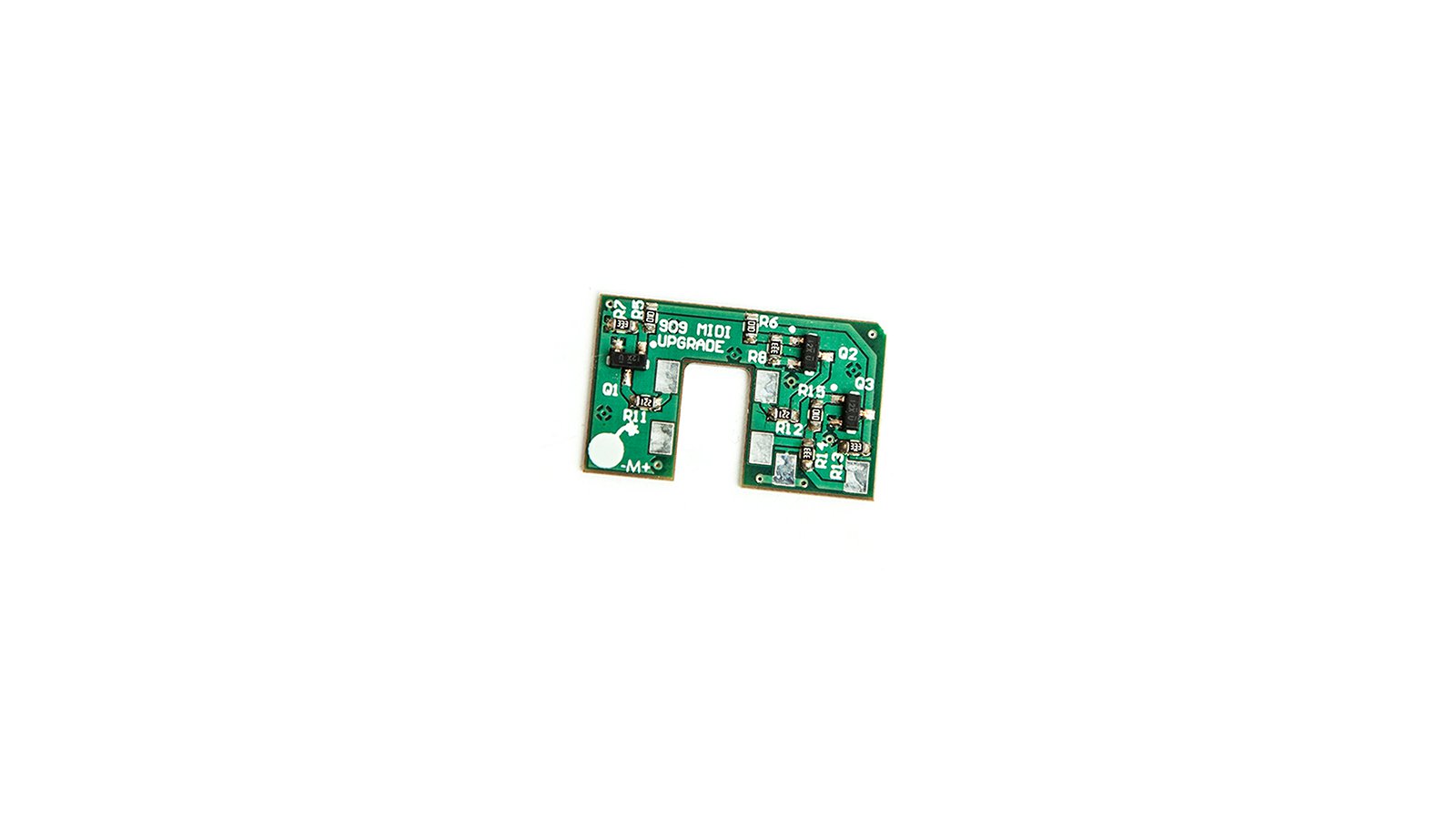
This mod is a low profile module that can be added at the MIDI ports without any modification to the main switch board. It provides individual drivers for each MIDI port. Installation instructions included.
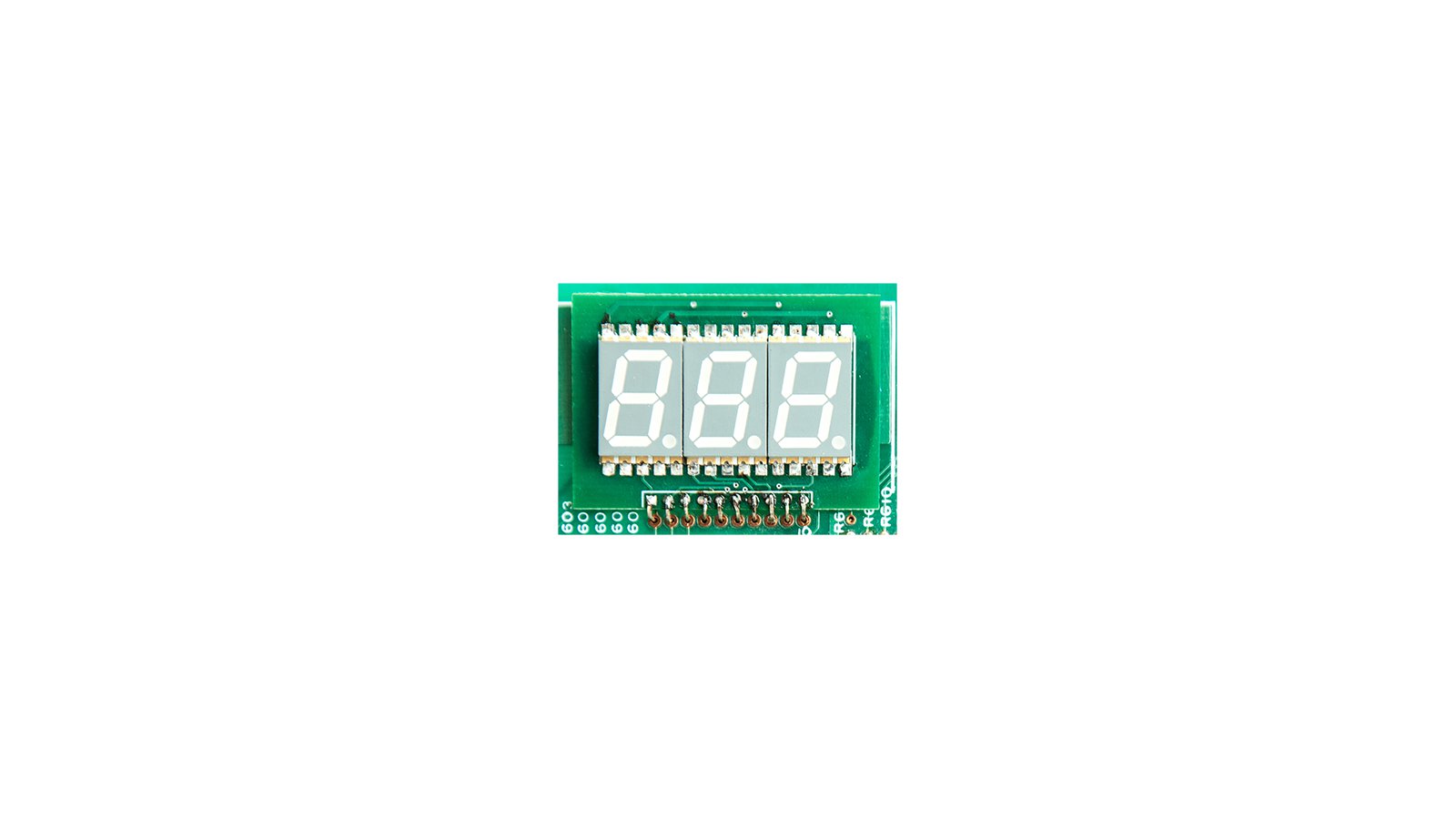
This is a replacement 3-digit LED display module. It can be used to upgrade your color scheme or to replace your existing module if one or more of the segments is no longer functioning. Available in red, green, blue, yellow, and orange. Installation instructions included.
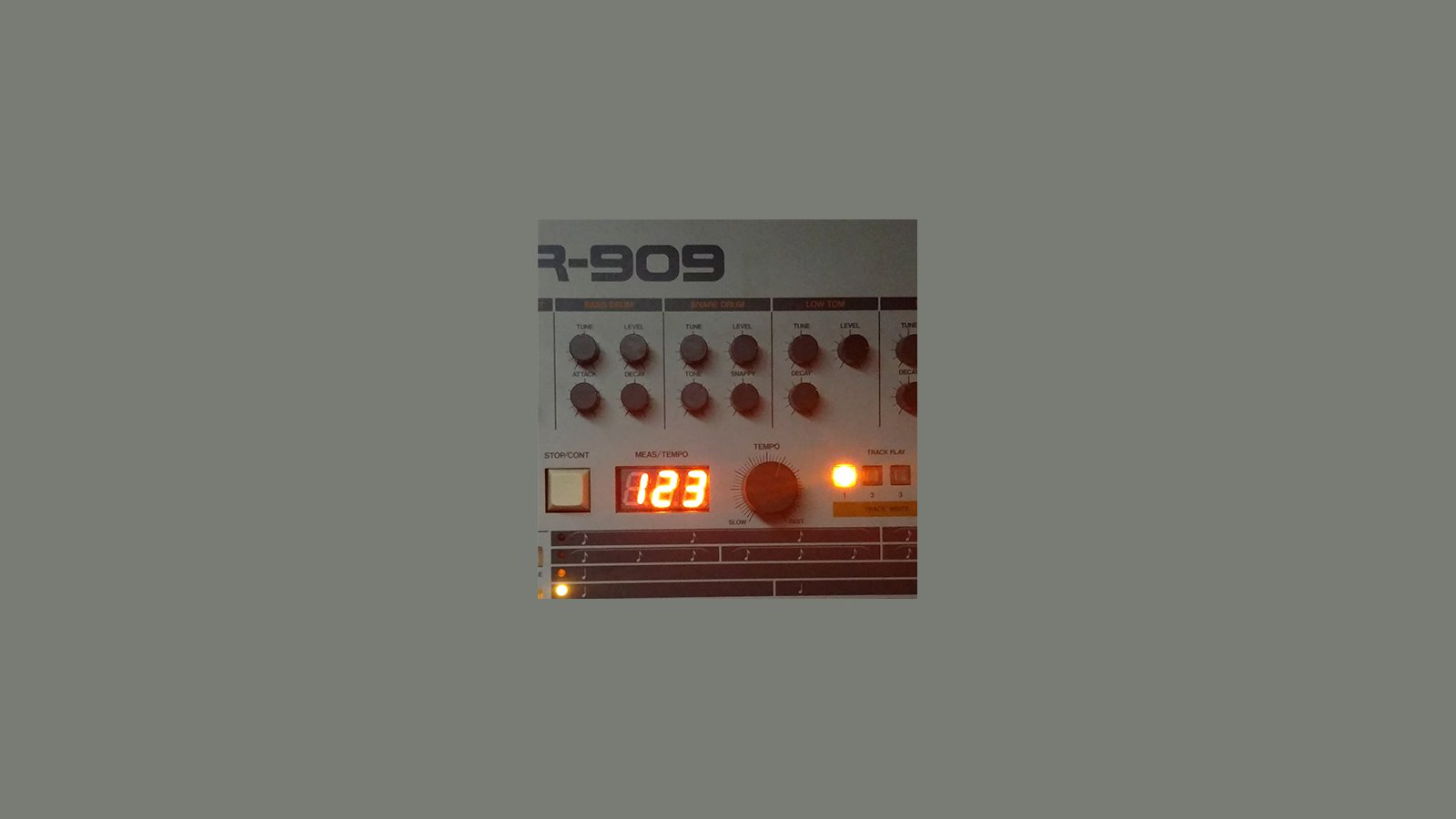
A complete set of “Roland orange” LEDs, including 17 rectangular LEDs for the push button switches, 14 LEDs that go inside the toggle switches, 4 LEDs for the scale selection, and a 3-digit LED display module.
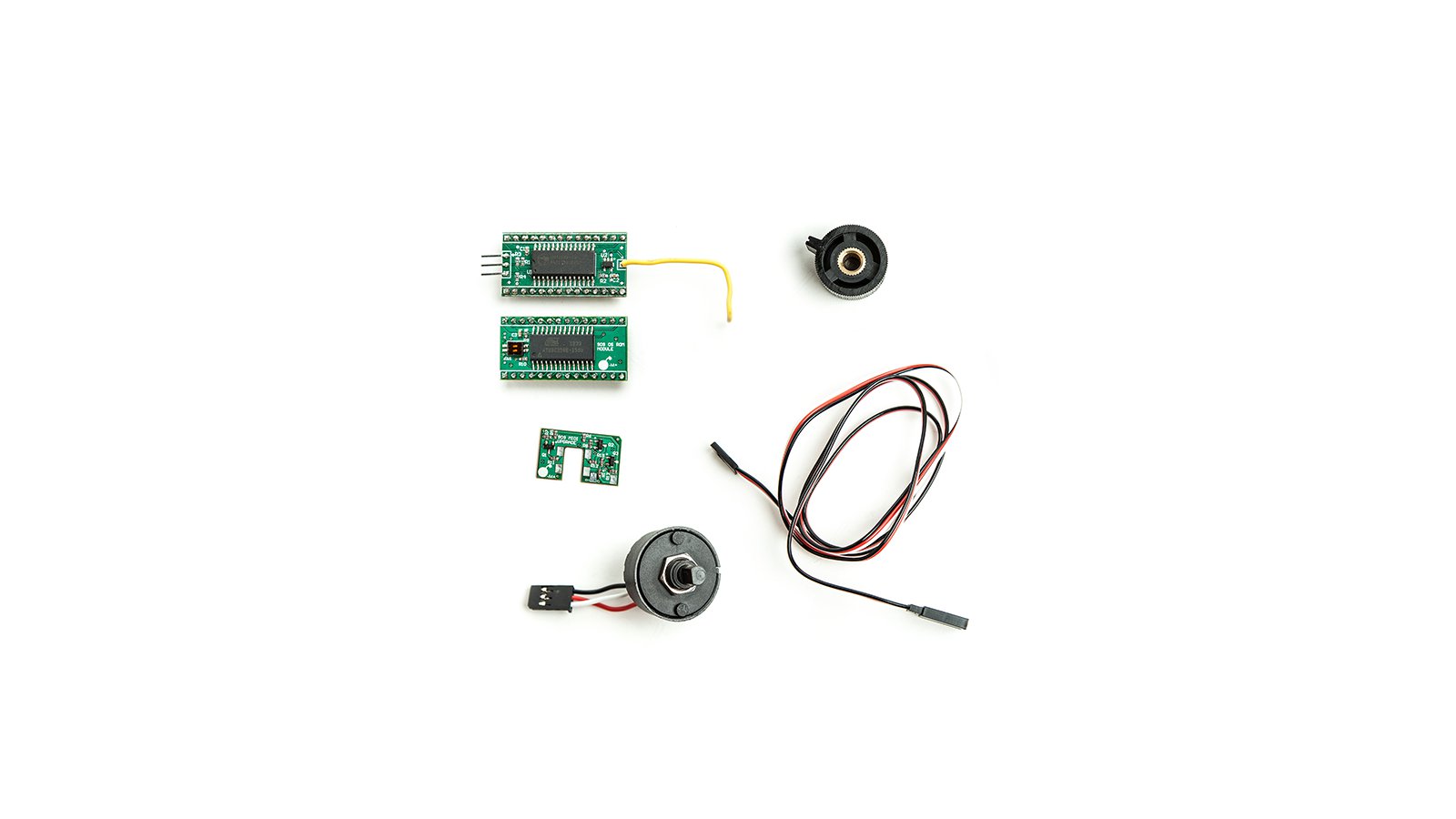
RAM Mod + OS ROM Mod + MIDI Driver Mod
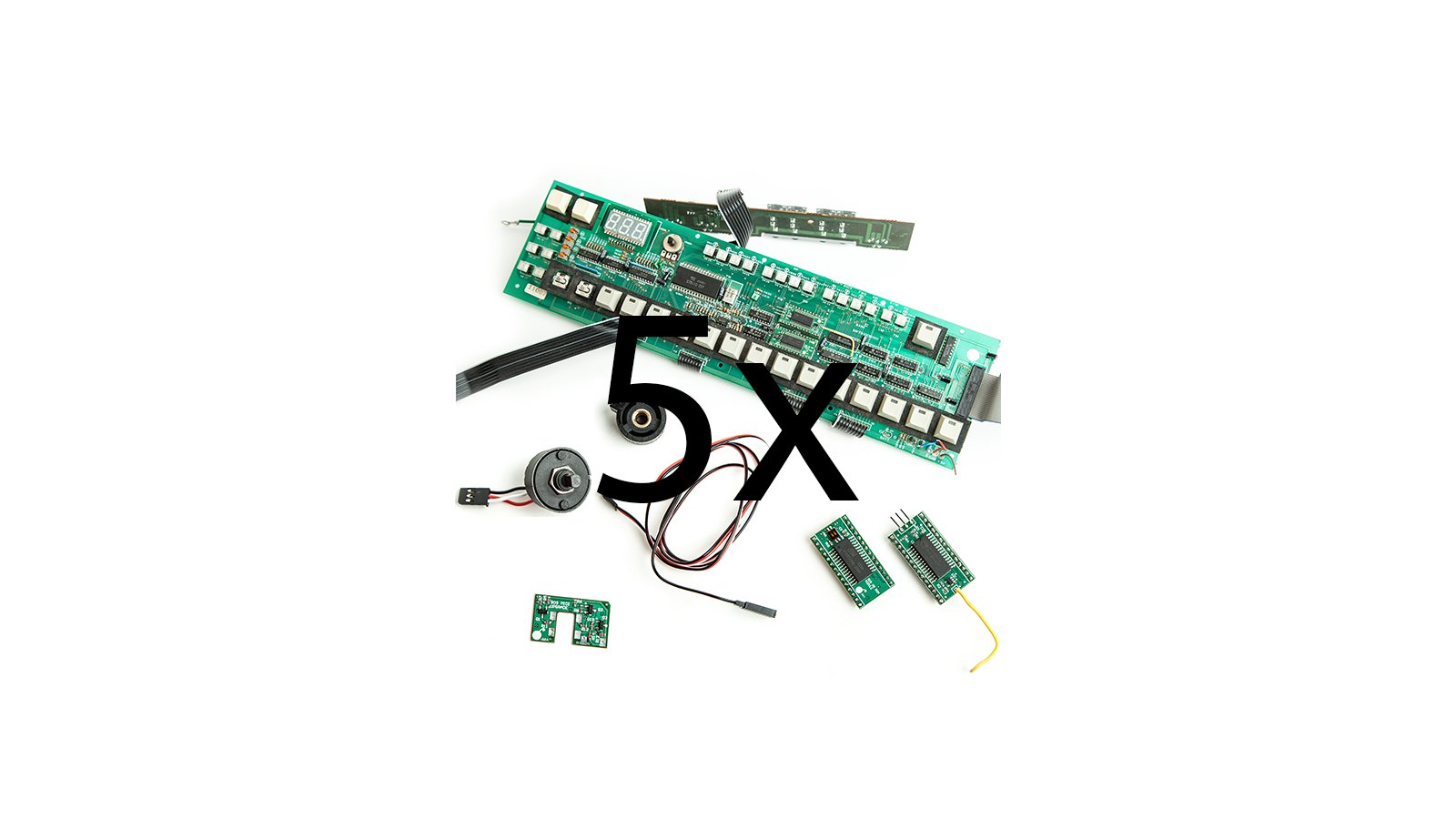
5 x RAM Mod + 5 x OS ROM Mod + 5 x MIDI Driver Mod + 5 x LED Display Mod
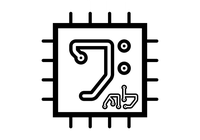
The Modlin Beat creates DIY installable modules to enhance vintage synthesizers and drum machines.